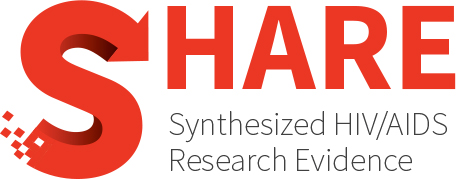Category Archives: Co-infections
Sensitivity and specificity of WHO’s recommended four-symptom screening rule for tuberculosis in people living with HIV: A systematic review and meta-analysis
BACKGROUND: Since 2011, WHO recommends a four-symptom screening rule to exclude active tuberculosis in people living with HIV before starting tuberculosis preventive treatment (ie, absence of current cough, weight loss,...
Trichomonas vaginalis and HIV infection acquisition: A systematic review and meta-analysis
OBJECTIVES: Trichomoniasis is the most prevalent curable STI globally, with the highest incidence and prevalence in sub-Saharan Africa (sSA). STIs have largely been associated with an increase in HIV acquisition....
Histoplasma capsulatum antigen detection tests as an essential diagnostic tool for patients with advanced HIV disease in low and middle income countries: A systematic review of diagnostic accuracy studies
INTRODUCTION: Disseminated histoplasmosis, a disease that often resembles and is mistaken for tuberculosis, is a major cause of death in patients with advanced HIV disease. Histoplasma antigen detection tests are...
A systematic review of the efficacy and safety of fecal microbiota transplant for clostridium difficile infection in immunocompromised patients
Background: Fecal microbiota transplantation (FMT) has been shown to be effective in recurrent Clostridium difficile (CD) infection, with resolution in 80% to 90% of patients. However, immunosuppressed patients were often...
Type-specific anal human papillomavirus prevalence among men, according to sexual preference and HIV status: A systematic literature review and meta-analysis
Background: Anal human papillomavirus (HPV) infection, most notably of HPV16, the central cause of anal cancer, is increased by anal sexual intercourse and worsened by HIV-positivity. Methods: We undertook a...
Morbidity benefit conferred by childhood immunisation in relation to maternal HIV status: A meta-analysis of demographic and health surveys
The study determined the prevalence of acute respiratory infections and diarrhoea among sub-Saharan African children. It also examined if there was any significant morbidity benefit conferred by three doses of...
The global and regional prevalence, burden, and risk factors for methicillin-resistant Staphylococcus aureus colonization in HIV-infected people: A systematic review and meta-analysis
BACKGROUND: Methicillin-resistant Staphylococcus aureus (MRSA) is among the most important opportunistic pathogens in HIV+ patients, resulting in considerable morbidity and mortality. METHODS: The MEDLINE, Scopus, Web of Science, and EMBASE...
A scoping review of the associations between mental health and factors related to HIV acquisition and disease progression in conflict-affected populations
The association between poor mental health and factors related to HIV acquisition and disease progression (also referred to as HIV-related factors) may be stronger among conflict-affected populations given elevated rates...
